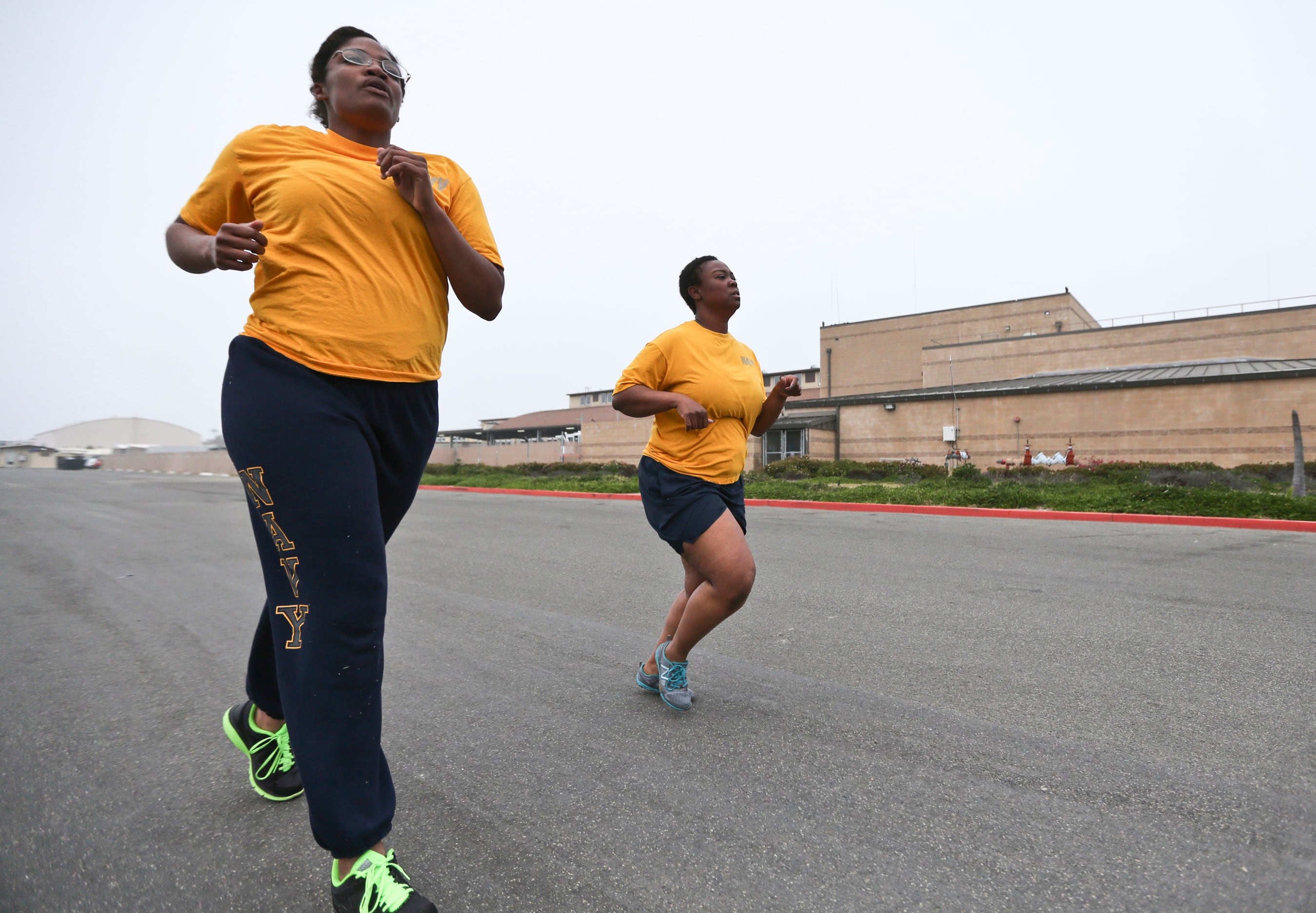SAN DIEGO — The Navy is giving another chance to thousands of sailors who otherwise would be kicked out for repeatedly failing their physical fitness tests because they exceeded body fat limits.
The service branch loosened its body fat restrictions in January and is allowing those who failed their exams three or more times to get one more opportunity to be tested this spring under the more lenient guidelines. The Navy said it has been losing too many talented sailors. Some were resorting to liposuction, diet pills and other measures to save their careers.
The Navy allowed about 2,400 sailors who passed a preliminary test under the new rules to stay in, reducing the number of failures on their records from three to one, said Navy spokesman, Lt. Cmdr. Nate Christensen. In the past, three failures were grounds for being kicked out. The sailors will be measured again this spring and allowed only two failures now instead of three.
The changes are the latest by the military looking to improve its abilities to recruit and retain talented people as it builds up its cyber-warfare strategy and faces competition from a rebounding economy.
A 2014 Pentagon study found that roughly two-thirds of Americans would not qualify to enlist in the armed services as a result of health problems, obesity and the failure to complete a high school education.
Navy Secretary Ray Mabus said the service is not lowering standards but rather adjusting to reality: People today, in general, are bigger but not necessarily fat. The Navy is also considering larger uniforms sizes for the first time in two decades.
"It's far more realistic," Mabus said of the new body fat standard. "We were kicking more people out of the Navy for failing that, than for drugs."
The number of sailors booted from the Navy annually because they did not meet physical standards has more than doubled from 694 in 2011 to 1,536 in 2014.
The changes come amid debate over whether the physical requirements demanded of service members across the board are still relevant or should be adjusted according to the job so the armed forces can maintain the pool of talent it needs for today's high-tech warfare.
There's been talk in the Army of easing up on strict body fat requirements for its cyber-warriors, for example.
All branches are reviewing their job standards to modernize their forces and prepare for the opening of combat posts to women.

Petty Officers Theresa Derby, left, and Lentoyi White run through the morning fog as part of their exercise routine on Feb. 29, 2016, in Coronado, Calif. The pair are trying to improve their fitness in order to pass the Navy's fitness test and remain in the Navy.
Photo Credit: Lenny Ignelzi/AP
From drone operators to cyber-warfare officers, "there are a number of officers in jobs where it is really obvious why it would not make whole lot of difference what their weight is, other than to the extent that the culture in the military disrespects it and therefore, they can't lead," said former Army officer James Joyner, who teaches at the Marine Corps University.
He believes the military must change.
"It's absurd the percentage of high school teenagers who are considered to be too fat to join the military," Joyner said. "Maybe there are two problems: One, obesity, and the other that the standards are out of date and not relevant."
Some 34,000 sailors, or roughly 10 percent of the force, have failed the physical requirements at least once since 2011, mostly because of body fat, Christensen said.
The Navy's old policy allowed for 22 percent body fat for males ages 17-39, and 33 percent body fat for females ages 17-39. Sailors age 40 and older were allotted one additional percentage point or 23 percent for males and 34 percent for women over 40.
The new limits fall in line with the Department of Defense standards and allow sailors to pass with a maximum 26 percent of body fat for men and 36 percent for women.
Service members have long complained that the Defense Department's method of estimating body fat punishes bulkier, muscular builds.
Plastic surgeons in communities near bases have said up to a third of their business comes from service members seeking liposuction to pass the exam.
The traditional, so-called "tape test" relies on measurements of the neck and waist to calculate one's body fat percentage. Fitness experts have questioned its accuracy.
The Air Force in 2013 started allowing airmen who fail the tape test but pass physical fitness exams to be measured using the Body Mass Index, which is a chart based on an individual's weight and height. The Navy adopted similar rules, expanded gym hours and provides fitness help to post-partum sailors.
Petty Officer Lentoyi White, 26, feared for her career, after failing twice.
"I am very grateful for a second chance with this new policy," said the single mother of a 5-year-old girl.
White, based in Coronado, California, uses a calorie-tracking app and does 30 minutes of cardio a day.
She has gone from 212 pounds to 188 and is confident she'll pass this spring.





